
|

|
||||
|
Landmarks ~
Churches ~
Pubs ~
Shops ~
Amenities ~
Dwellings ~
Events ~
Schools ~
Sports
Industrial ~ Transport ~ Folklore ~ Families
~ Pubs ~
Bell ~
Bricklayers Arms, Kent St. ~
Bricklayers Arms, Straits ~
Bull & Butcher ~
Cottage Spring ~
Cross Keys ~
Duke William
Fiddlers Arms ~ Glynne Arms ~ Hop and Barleycorn ~ Horse & Jockey ~ Horseshoe ~ Leopard ~ Limerick ~ Limerick, Kent St. Lion ~ New Inn ~ Pear Tree ~ Queens Head ~ Royal Exchange ~ Spriggers Arms ~ Swan ~ White Chimneys ~ White Lion Bulls Head ~ Cottage of Content ~ Crown ~ Durham Ox ~ Five Ways ~ Good Intent Green Dragon ~ Junction ~ Shakespeare ~ Straits House ~ Waggon & Horses Black Bear ~ Britannia ~ Bush ~ Five Ways, Himley Road. ~ Forge ~ Fountain ~ Jolly Crispin Meadow Lark ~ Miners Arms ~ Old Bulls Head ~ Old Mill ~ Red Cow ~ Red Lion ~ Spills Meadow ~ Woodman
The Glynne Arms - The Crooked House
 The Crooked House, 2014
The Crooked House, 2014
The Glynne Arms, Himley. 'The Crooked House'.
 Aerial view of demolition site; August 23, 2023.
Aerial view of demolition site; August 23, 2023.
Remains of the three buttresses can be seen in the centre
Photo: Lee Bates.
UPDATE: 06-08-2023
The Crooked House was completely gutted by fire on the night of 5th August 2023. The building was demolished two days later and sadly is no more. In June 2023 the pub closed for the last time, the premises was sold off by Marstons, the Wolverhampton based brewery company, two weeks after the new owner took control, the building was set on fire and within a couple of days it was completely demolished!
This famous establishment, although not strictly located in Gornal,
was just over the border in the Parish of Himley and probably one of the most
famous pubs in the country - maybe the world.
I make no excuses for including it!
This was originally built as a farmhouse in 1765, the house was converted to a public house around 1830
and thereafter called the Glynne Arms
after the landowner at the time Sir Stephen Glynne, in recent times it has been given the popular
'The Crooked House' signage as most would know it.
The sensational appearance was due to mining subsidence that occurred in the middle of the 19th century, this canted the building over 15 degrees,
most buildings would have collapsed with this amount of disturbance, but with the addition of supporting buttresses it has remarkably survived.
The locals knew it as the 'siden house', or 'sidin' (side-in) this being a local expression for crooked.
The Crooked House was remotely situated at the end of a winding lane, passing quarries and landfill sites, under two derelict bridges
which once carried the mineral railways from nearby collieries, the areas industrial past is buried in time although presently
this is far from being a picturesque setting.
The approach route may be spoilt but this unique tourist attraction was one of the great obscurities of the Black Country. Just entering the establishment gave an unsettling feeling of inebriation long before the effects of alcohol, fixtures and fittings have been customised to suit and a marble apparently rolling up the slope of a table was quite bizarre.
1927. The Birmingham Post, Wednesday June 1st.
The Glynne estate bordered land with that of the Earl Of Dudley, and the house virtually straddled that border,
sometime in the middle of the nineteenth century, coal was inadvertently mined from below the building on the Glynne side.
Subsequently, one side of the house subsided into the mine workings without any apparent damage to the structure and remarkably survived 'crooked'.
The Estate belonged to the Glynne family since 1779, Sir Stephen was the brother-in-law of Liberal politician William Gladstone,
enterprising Glynne became part owner of the Oak Farm Iron and Brick Works.
Although successful at first, bad management had set the company on a downward spiral, in the later part of the 1840s, Gladstone helped rescue Glynne from near bankruptcy when the enterprise got into difficulty, although the Oak Farm Company managed to struggle on, it was eventually sold off after Glynne's death in 1874.
The building was condemned in the 1940s and due for demolition, however to save the
'Crooked House', the buttresses which were already in place on the south
side were strengthened.
In the early fifties, it's future was still uncertain due to structural issues and was declared unsafe. In 1957, the then owners - The Wolverhampton and Dudley Brewery spent £10,000 on repairs to make the building safe, it wasn't until this time that electricity was installed. A fire in 1986 damaged some of the upstairs and roof, the brewery spent £360,000 on a facelift the following year. 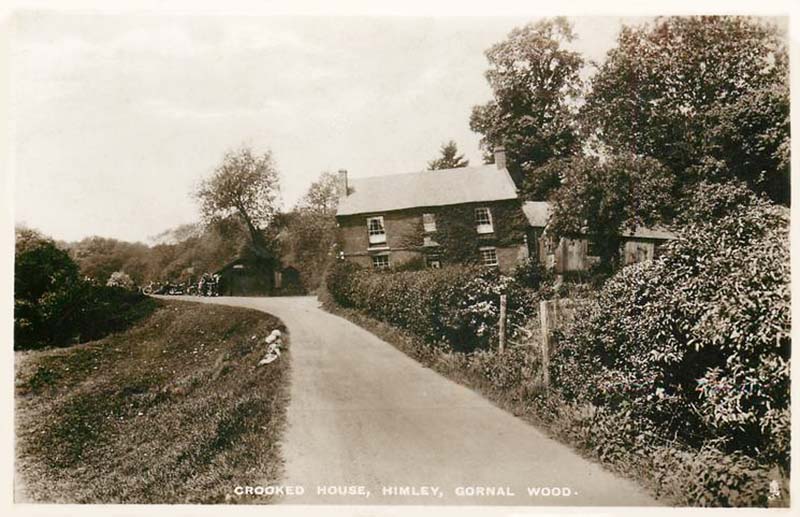 1930s view of the Crooked House 1930s view of the Crooked House
Vintage Ralph Tuck Real Photo Postcard c1930
Many picture postcards were produced for what had become a popular tourist attraction.
The John Price & Sons printing company in Bilston produced a large series of postcards depicting local scenes and landmarks during the early 20th century.  Vintage postcard c1906, showing a group - probably including the Glaze family at the rear.
Vintage postcard c1906, showing a group - probably including the Glaze family at the rear.
Several postcards were produced in the early 1900s with views of the 'Crooked House' illustrating inside and outside which are both equally remarkable,
these cards were printed in full colour.
The following three postcards show the 'Crooked House' as it was referred to around 1900.  The Crooked House frontage. The Crooked House frontage.
Vintage John Price & Sons postcard No.58 c1910 (CDM collection)  The 'Magic Table' where marbles appear to run 'up' the table. The 'Magic Table' where marbles appear to run 'up' the table.
Vintage John Price & Sons postcard No.393 c1910 (CDM collection)  Interior view of the Crooked House Interior view of the Crooked House
Vintage John Price & Sons postcard No.267 c1910. CDM Collection
Licensees:
 Another John Price Postcard probably a little later but still with Sarah Ann Glaze signage over the door but the landlord standing in the doorway may be Samuel Green, as another version of this exact view has 'Samuel Green' on the sign.
Another John Price Postcard probably a little later but still with Sarah Ann Glaze signage over the door but the landlord standing in the doorway may be Samuel Green, as another version of this exact view has 'Samuel Green' on the sign.
CDM Collection
1841, John Cartwright, miller, farmer and beerhouse keeper. [Census]
The property was referred to as 'Cartwright House'.
1851, Polly Cartwright, farmer of 30 acres. [Census]
At this time the property was referred to as Himley Oak Farm,
Polly was John Cartrwright's widow, aged 66.
1861, Joseph Woodcock, inn keeper. [Census]
1871, Joseph Woodcock, inn keeper. [Census] 1878, Joseph Bate. [License transfer from Joseph Woodcock] 1881, Uninhabited. [Census] 1888-1891, Thomas White, licensed victualler. 1901, Sarah Ann Glaze. [Census] 1904, Mrs. Sarah Glaze. [Kelly's Trade Directory] 1911, Sarah Ann Glaze, publican, widow age 57. [Census] 1912, Mrs. Sarah Ann Glaze. [Kelly's Trade Directory]
Mrs Sarah Glaze purchased the pub in 1927.
She had been managing the pub since 1899, Sarah died in December 1937 aged 84 years.
1925-1935, George Henry Glaze - this was Sarah Ann's Son.
1940, George Glaze. [Kelly's Trade Directory] 1940, the Glaze family sold the premises to Johnson & Phipps Ltd., Wolverhampton. 1952, Samuel Green. 1960s-1970s, Arthur John Love. 2010, Wayne Penn.  Another postcard view probably c1915
Another postcard view probably c1915
Many of the old postcards slightly exaggerate the appearance.
CDM Collection
 Postcard view looking outwards from the front doorway.
Postcard view looking outwards from the front doorway.
CDM Collection
 Postcard view of the bar room, always lots of strange angles.
Postcard view of the bar room, always lots of strange angles.
Among assorted bottles, a Julia Hanson poster hangs by the window (Hansons brewed at Upper High Street, Dudley) and also a Bass & Co. Old Strong Ale sign sits in the foreground.
CDM Collection
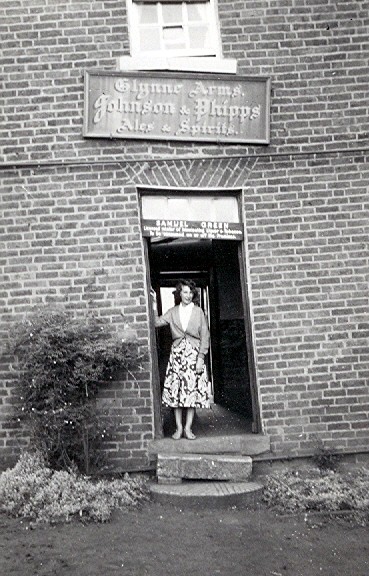 At the front door c1950s.
At the front door c1950s.
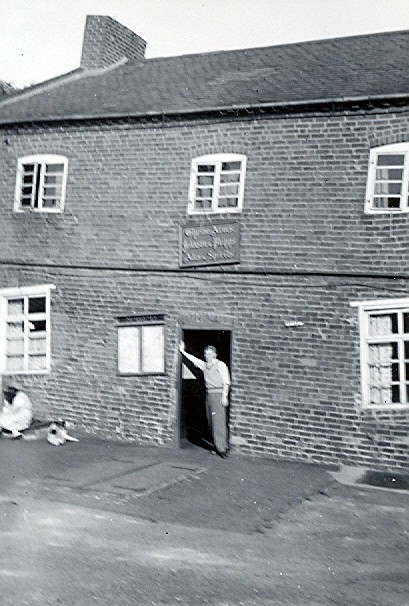 At the back door, 1950s.
At the back door, 1950s.
Two photos, courtesey of Mr. Ian Shurvinton. 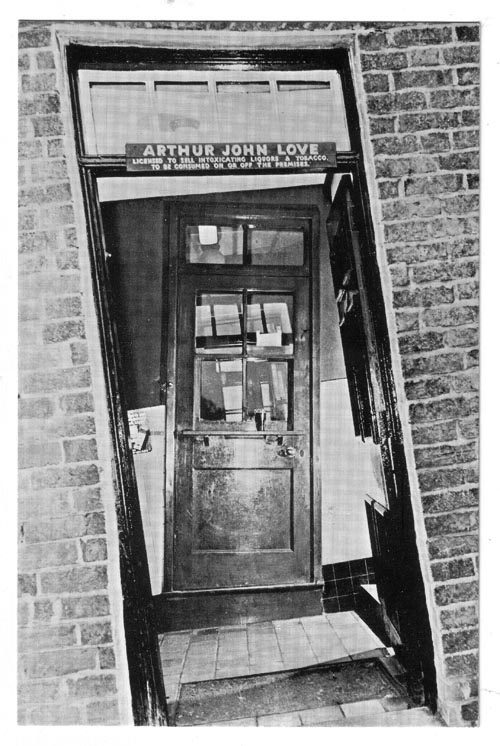 Picture of the front door c1970.
Picture of the front door c1970.
CDM Collection
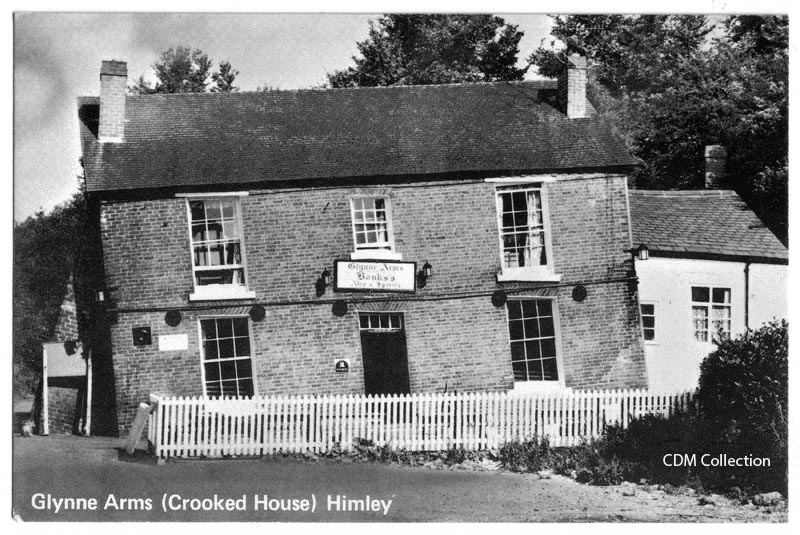
CDM Collection
1910 The County Express, Saturday December 10.
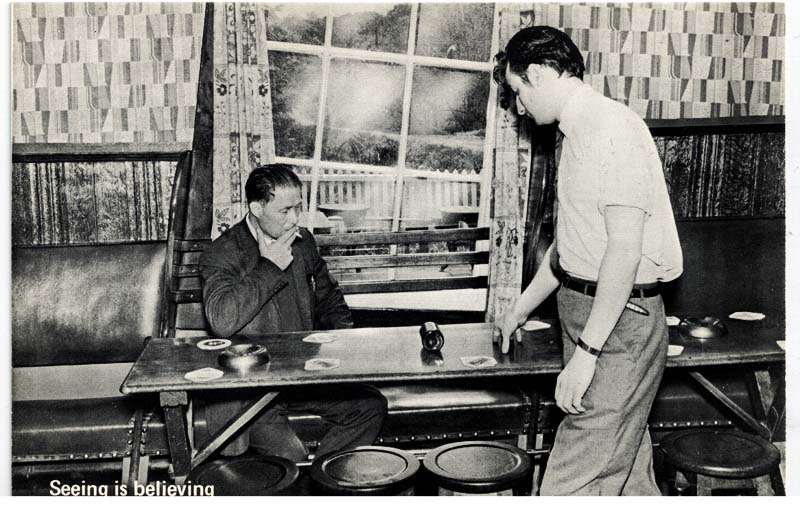
CDM Collection
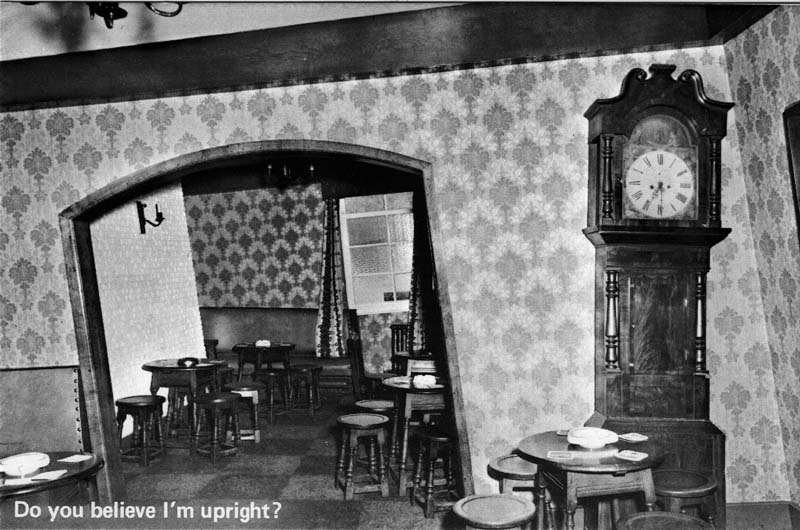
CDM Collection
The above four black & white pictures were part of a set distributed by Arthur
John Love, Licensee c 1975.
His wife Florence would wager 5 shillings to anyone who could manage to stand upright with both heels against one of the sloping walls, reputedly an impossible task. 1905 The Herald, 12 April.
~
|
|





